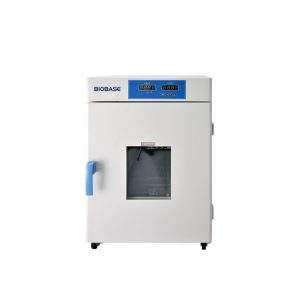$4,000.00

Conduct Science is a premier manufacturer of research infrastructure, born from a mission to standardize the laboratory ecosystem. We combine industrial-grade precision with a scientist-led tech-transfer model, ensuring that every instrument we build solves a real-world experimental challenge. We replace "home-brew" setups with validated tools ranging from microsurgical suites to pathology systems. With a track record of >1,600 institutional partners and hundreds of citations, our equipment is engineered to minimize human error. We help you secure more data for less of your budget, delivering the reliability required for high-impact publication.

bool(false)

bool(false)

Specification | Details |
Model | RS-3 |
Capacity per cup | Approx. 350 mL |
Number of cups/stations | 15 (Station 1: drying- Station 2: washing- 13 reagent stations) |
Slide throughput | Up to 24 slides simultaneously |
Protocol programming | 25 programmable protocols- each with up to 30 editable steps |
Time in cup control | Adjustable 0–59 min and 0–59 sec |
Temperature control | ±1 % precision |
Dripping time | Adjustable 0–60 sec |
Stirring frequency | Adjustable 0–6 times/min |
Power & Voltage | 400 W- AC 220 V ±10%- 50 Hz (also supports 110 V ±10%- 60 Hz) |
Dimensions (L×W×H) | 925 × 250 × 260 mm |
Net weight | 27 kg |
Housing/material | APS-coated- corrosion-resistant- easy-to-clean housing |
The RS3 is a fully automated tissue stainer that can stain up to 24 slides simultaneously, with a fast staining process. The unit features an APS-coated, streamlined, sturdy housing that is easy to clean and highly resistant to corrosion. The integrated, highly intelligent control system allows for the storage of up to 25 staining protocols, each with 30 editable steps.
Technical specifications include a capacity of 350 ml per cup, with a total of 15 cups: one for drying, one for washing, and the remaining 13 for reagents. The processing time for each cup is adjustable between 0-59 minutes and 0-59 seconds.
The equipment has a net weight of 27 kg and its dimensions are 925 mm (W) x 250 mm (D) x 260 mm (H). It is CE certified and ideal for routine H&E staining in labs.

The Roundfin RS3 Automated Tissue Slide H&E Stainer is a compact and efficient device designed for the workflow of pathology labs. With an intuitive touchscreen interface, this mini device offers an intelligent and automated staining solution. It is ideal for educational, clinical, and research laboratory environments. The system is designed to be easy to use, allowing for seamless human-machine communication.
The RS3 H&E Stainer operates with a low-noise, wear-resistant, flexible transmission system that uses imported high-quality materials and components to ensure stable and reliable performance. It features an intelligent automatic water influx/efflux/drainage system that ensures sufficient washing performance at each step and improves water efficiency. The highly intelligent control system allows for smooth communication between the user and the machine.
The equipment allows you to program and store up to 25 staining protocols. Each protocol can contain up to 30 editable steps for the staining process
Compact and Robust Design: Its small footprint allows it to be placed near the sectioning area for an optimal workflow. The housing has an APS coating, making it easy to clean and highly resistant to corrosion.
Simple Operation: The device features an intuitive touchscreen interface and a highly intelligent control system.
Efficiency: It is capable of staining 24 slides simultaneously with a prompt staining process. In addition, its intelligent water management system improves water efficiency.
Programmability: It allows you to program and store multiple staining protocols (up to 25) for a variety of needs
High Initial Cost: The upfront investment to acquire an automated staining system is considerably higher than that for manual staining equipment and reagents. This can be a barrier for labs with limited budgets or a low volume of samples.
Learning Curve: While the operation is simple, lab personnel still require training to operate the equipment effectively, troubleshoot issues, and perform maintenance.
Limited Flexibility: The equipment’s predefined protocols are optimized for the most common H&E staining methods. For rare or experimental stains, the versatility of manual staining may be necessary.
Dependence on Reagent and Protocol Quality: The quality of the final stain is highly dependent on the reagents used and the correct protocol configuration, despite the automation. Variations in sample preparation or reagent quality can affect the final results.
Compact, efficient design: Small footprint suitable for placement near sectioning work areas.
High throughput: Simultaneously processes up to 24 slides.
Highly customizable protocols: Store up to 25 distinct protocols with up to 30 steps each.
Precise control: Fine tuning of timing, temperature, dripping, and stirring parameters.
User-friendly housing: Durable and streamlined APS coating makes it easy to maintain.
Flexible power support: Can operate on both 220 V and 110 V setups.
Setup & Power Connection
Place near sectioning area; connect to appropriate voltage (110 V or 220 V).
Protocol Programming
Use control panel to set up staining parameters (time, temperature, stirring, dripping).
Save up to 25 protocols (up to 30 steps each) for recurring workflows.
Load Slides and Reagents
Insert up to 24 slides into holders.
Fill reagents into the appropriate 13 stations; station 1 for drying and station 2 for washing.
Run Staining Process
Initiate programmed protocol and monitor process.
Adjust as needed within the programmable parameters.
Post-Process Cleaning
Clean housing and cups (housing is easy-to-clean APS-coated).
Prepare for next run by loading fresh reagents or emptying used ones.
Maintenance and Safety
Regularly check stirring and dripping mechanisms.
Observe temperature precision and ensure power supply stability.
The Roundfin RS3 Automated Tissue Slide H&E Stainer is a compact and robust device designed for automated tissue slide staining. Its operation is simple thanks to a touchscreen and an intelligent control system that can store up to 25 staining protocols. The equipment is highly efficient, capable of staining 24 slides at once, and features a reliable transmission system and an automatic water management system to ensure consistent results
Ferreira, D., Vale, J., Curado, M., et al. (2022). The impact of different coverslipping methods in the quality of the whole slide images used for diagnosis in pathology. Journal of Pathology Informatics. https://pmc.ncbi.nlm.nih.gov/articles/PMC11062949/
Panteli, N., & Voutsas, D. (2025). Evolutionary Paradigms in Histopathology: Serial Sections technology. arXiv. https://arxiv.org/html/2508.02423v1
US Patent WO2009148885A2. (2009). Hematoxylin staining method to address gradient staining. Google Patents. https://patents.google.com/patent/WO2009148885A2/en
Greenlee, J. (sin fecha). The Basics of H&E Staining. Histology Education. https://www.histologyeducation.com/course/he-staining
| Weight | 27 lbs |
|---|---|
| Dimensions | 925 × 250 × 260 cm |
There are no questions yet. Be the first to ask a question about this product.